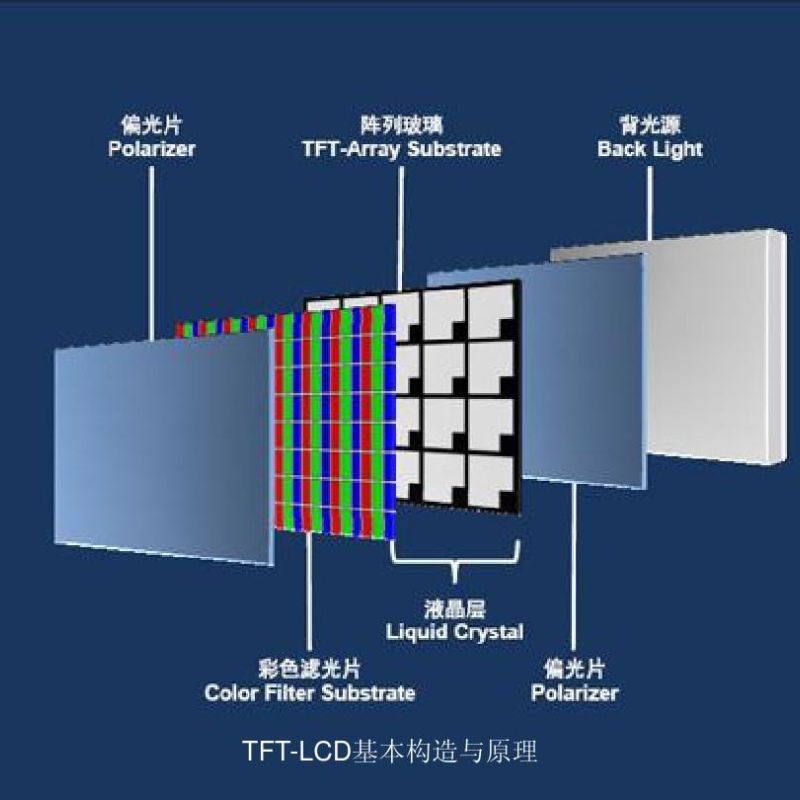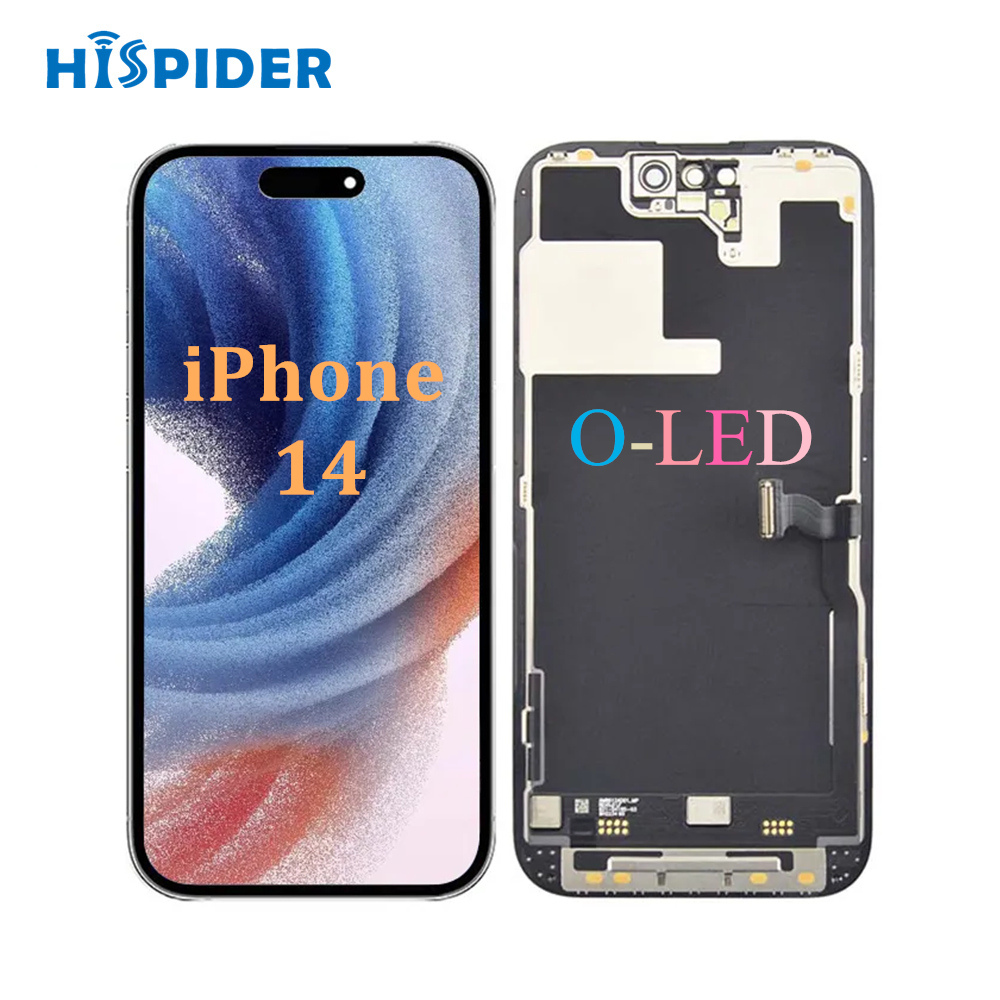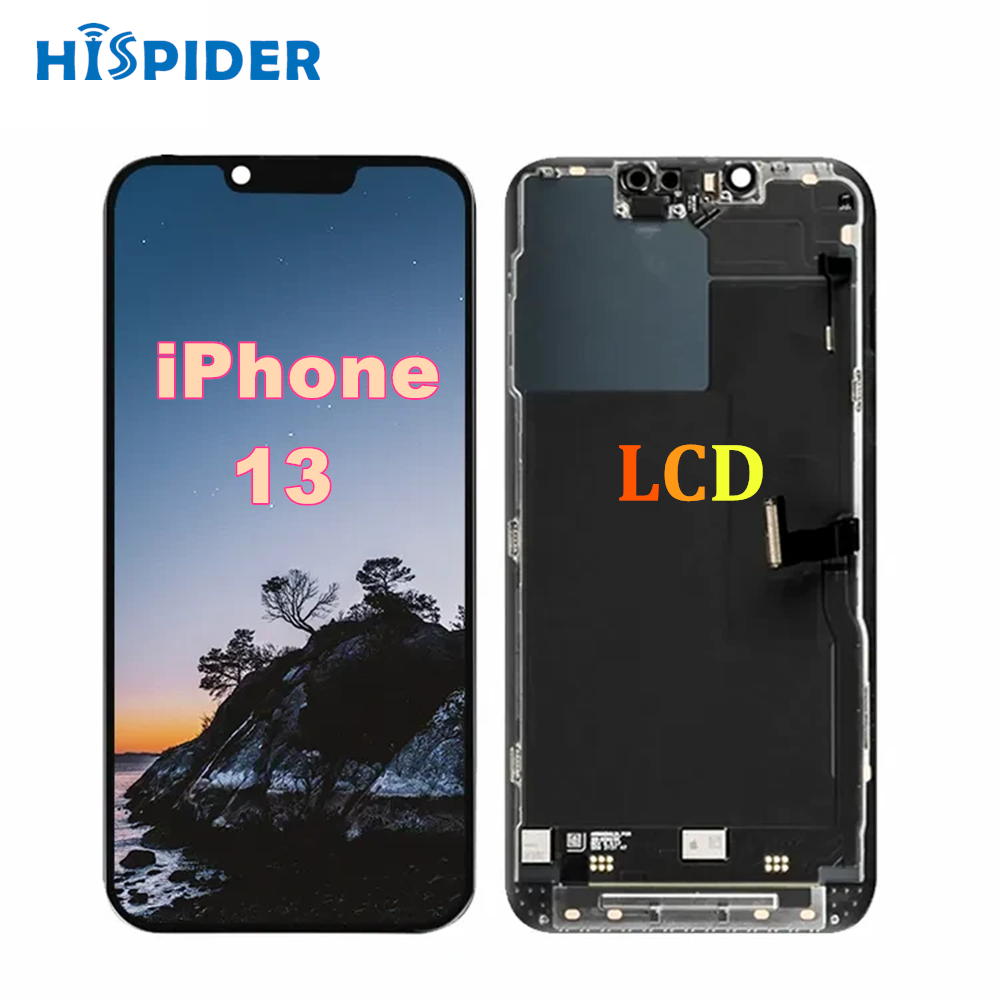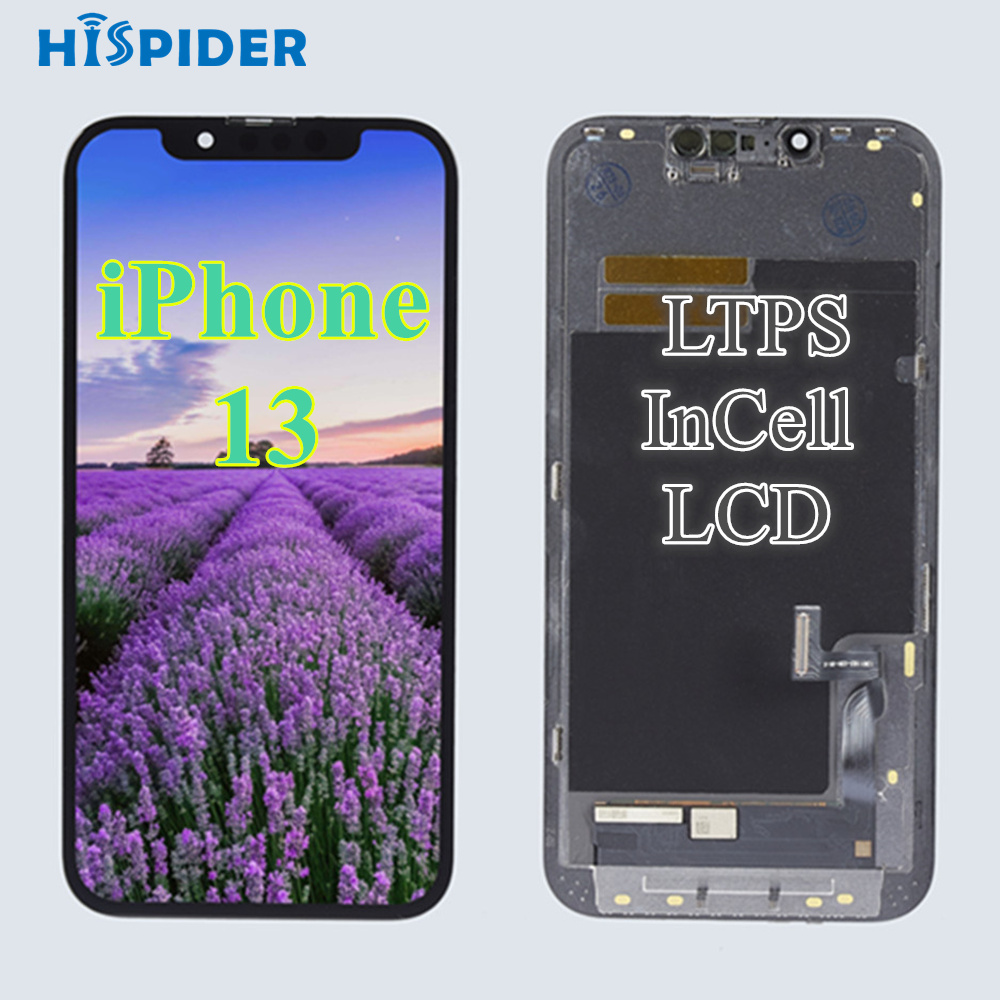The luminous principle of LCD screen and OLED screen
1. The concept of pixels
To understand the working principle of the screen, you first need to clear the concept of pixels, a screen is composed of thousands of pixels, pixels are the only sub-element of the screen, and the shape of the pixel is a square. The pixels are composed of red, green and blue, dividing the square into three equal parts, each of which is the same size, but each part is a different color.
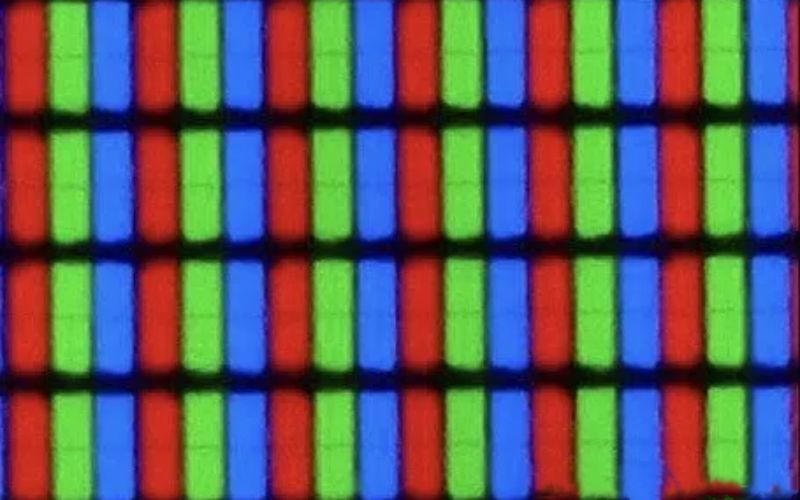
Red, green and blue are the three primary colors, so you can control the final color by adjusting the color of each part of red, green and blue.
Each pixel presents its own color, and thousands of pixels present the most diverse picture. We take one of the pixels and look at its structure from the side profile, from the bottom up: the backlight layer, the vertical polarizer, the positive circuit, the liquid crystal layer, the negative circuit, the horizontal polarizer and the color filter.
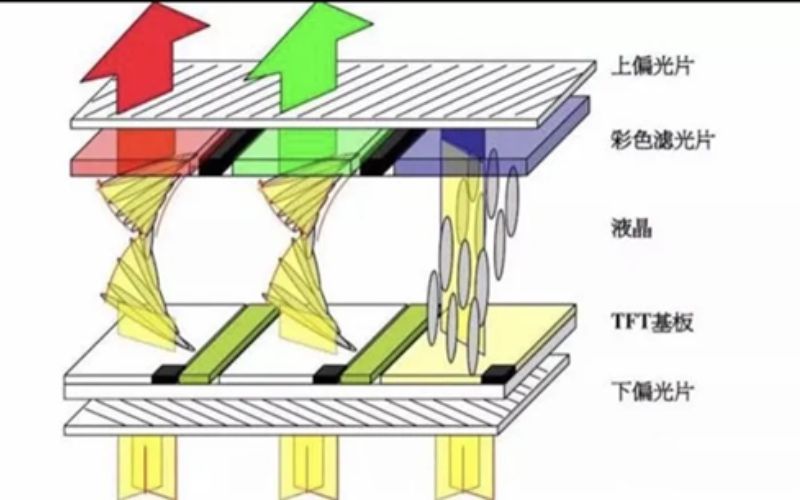
2. The luminous principle of LCD screen and OLED screen
2.1 The luminous principle of LCD
In the seven-layer structure, the backlight layer is responsible for emitting white light, the positive circuit and the negative circuit are responsible for energizing and generating voltage, and the liquid crystal layer is affected by voltage to deflect the liquid crystal molecules to block part of the light emitted by the backlight layer.
For example, the liquid crystal layer with the function of shading is like a blind, and the blind has been seen by everyone, and the light comes in when the curtain is lowered, and the light is blocked when the curtain is pulled.
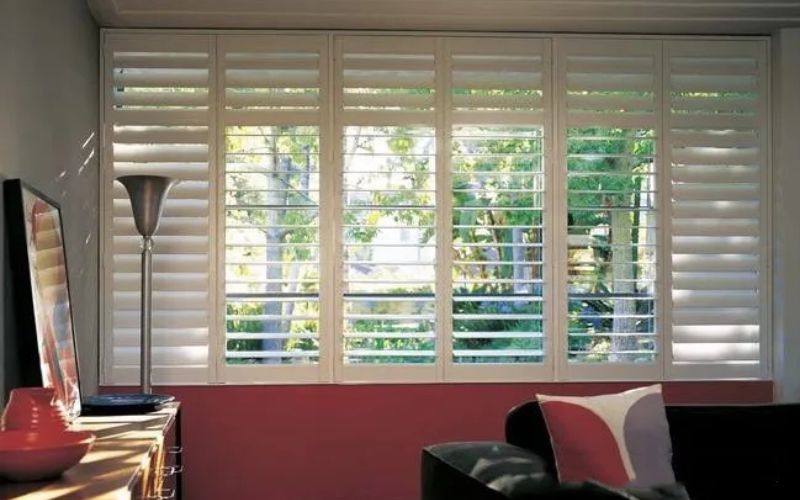
The liquid crystal layer is this truth, the positive circuit and the negative circuit produce voltage, the liquid crystal molecules inside the liquid crystal layer are deflected, and the amount of light through the deflection Angle is controlled.
The more light that passes through, the greater the color values of red, green, and blue, and the less light that passes through, the smaller the color values of red, green, and blue. As mentioned above, you can control the color of the final pixel by adjusting the color values of the red, green, and blue primary colors.
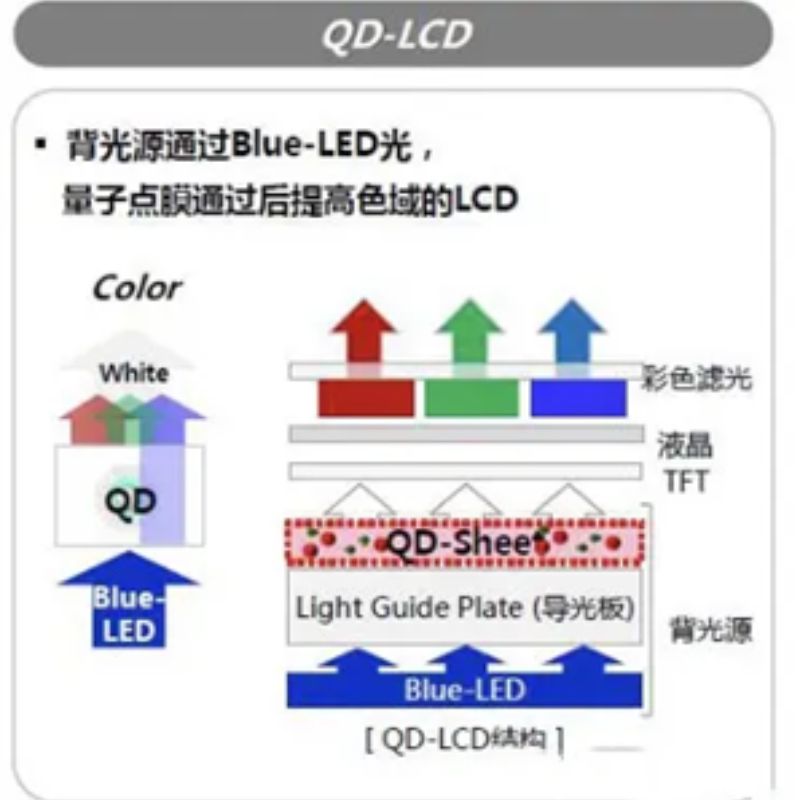
This is the luminous principle of the LCD screen, by controlling the deflection of the liquid crystal molecules, to control the color of the sub-pixels, each sub-pixel does its job, and finally presents a colorful picture. However, it should be noted that the backlight layer of the LCD is a large backlight layer shared by all pixels of the entire screen.
2.2 The luminous principle of OLED
OLED light-emitting principle relative to LCD is much simpler, OLED full name is Organic self-emitting Diode (Organic Light Emitting Diode), it is also composed of red, green, blue three parts.
But OLED has no liquid crystal layer and backlight layer, the reason why it is called self-light, the reason is that it will emit its own light. If you give her electricity, she will be bright, no electricity will not be bright, the more electricity, the more bright, the less electricity, the darker.
So by applying a different voltage to each diode, you can control the red, green and blue color ratio of the sub-pixels, so as to control the color of each pixel.
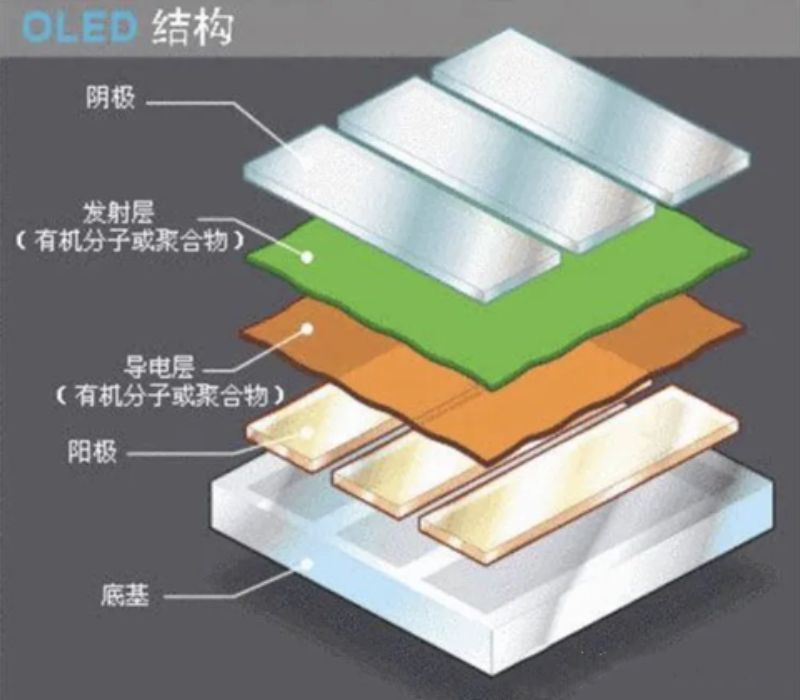
It should also be noted that LCD has a backlight layer, so the whole screen is lit together when it is turned on, and the whole screen is turned off together when it is turned off, while OLED has no backlight layer, and each pixel is independently controlled, so she is not like LCD, the whole screen is lit together when it is turned on, and the whole screen is turned off together. She can selectively light up some pixels, and the rest of the pixels can be unenergized, so it does not consume power.
Hispider, as a professional manufacturer of cell phone replacement screens, not only keeps pace with the development of cell phone screens to produce the latest OLED screens, but also takes into account the user demand for cost-effective cell phone screens, LED cell phone replacement screens are also continuing to be produced.

